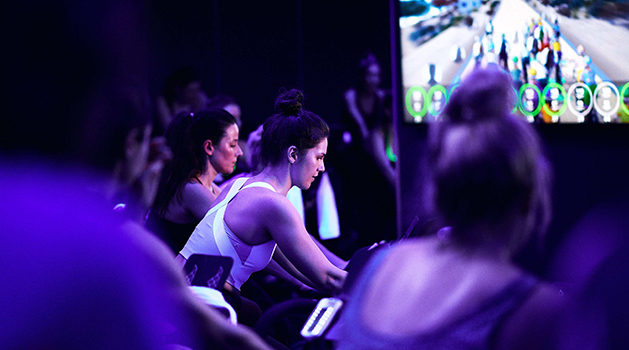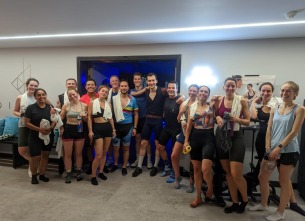Since we’ve opened the doors at Digme, we’ve had a great response from our customers to the immersive training system (Spivi) we use. In particular, there’s been a lot of interest in the numbers that are being used in the class.
The most important metric used in Spivi is ‘Functional Threshold Power’ (FTP). Your FTP is an individual number and is the maximum average power you can maintain for 60 minutes. This number forms the backbone for most of the displays used in Spivi and, if set correctly, can really help you gauge your effort through the class.
FTP will vary a great deal from one rider to the next. It is not unusual to see numbers varying from say 60 watts all the way up to a Tour de France rider like Chris Froome who has an FTP approaching 400 watts. In Spivi, the default setting is 150 watts. However, this could be a substantial over- or under-estimate for you.
Why is it important to know your FTP?
FTP is a fantastic benchmark calculation to show you how fit you are. Sure, you can use calories or average power in a workout to gauge your progress but these are very rough approximations since workouts vary from one session to the next. An FTP test is a standardised workout that ultimately spits out a single number to give you a measure of your fitness. This gives you something to hang your hat on and a single target to improve over time.
By knowing your FTP a whole new world of understanding how hard to go in your Digme sessions is opened up to you. On our screens, you will see in the top-left corner of the display a percentage of FTP guide for how hard you should be working. So once you know that your FTP is 100 watts, when the instructor and display are telling you to ride to 120%-130% of your FTP, you know exactly what this means.
This will dramatically improve the efficacy of your sessions. You’ll know exactly how hard you should be going to maximise the training benefit of the session. You will suddenly feel like you have vision and understanding of your workout.
What is the difference between FTP and Heart Rate (HR)?
Several people have asked whether power training is the same as heart rate training. There are similarities, but they are quite different variables.
One of the key differences is that power is a clean metric. Power is a mechanical output – it is what the pedals are actually receiving – and has a direct correlation with the calories burned or speed achieved.
By contrast, HR is a physiological output. It is powerful in many ways, but it is influenced by lots of factors other than your effort on the bike. It will be influenced by what you had for breakfast, if you’ve got a cold, whether you’ve had a lot of caffeine, your stress at work or whether you’re lacking sleep.
HR is also an even more individual measurement than power. If you understand your own HR zones, it can be very powerful. I do most of my training with an HR monitor. However, there is very little intelligence to be gained by comparing one person’s HR with another in a class format.
Why?
HR is not dependent on fitness. For example, My resting HR is 47 and my max HR is 198: my range is 151 beats. I have a very good and extremely fit friend whose equivalent numbers are 70 and 155: his range is 85 beats, 56% of my range.
I can comfortably hold an HR of 160 beats during endurance exercise, but this is above his maximum and he is no less fit. Without a great deal more understanding, comparing one person’s HR with another is fraught with danger of misinterpretation.
How to measure your FTP
There are a number of standardised tests out there for measuring your FTP if, like most people, you don’t have the time or inclination to literally ride to exhaustion for 60 minutes. The most commonly used test is probably the 20 minute test, where the rider measures his or her maximum average power for 20 minutes and multiplies that number by 95%.
In the next couple of weeks, we will be introducing a regular FTP test into our timetable. It’s designed to give you an accurate FTP reading, which you can use to set your personal FTP level in Spivi. We’d encourage all riders to do a test if they’d like to understand better the numbers that they see in the class.
Watch this space!








COMMENTS (0)
Be the first to comment!
Please login to comment